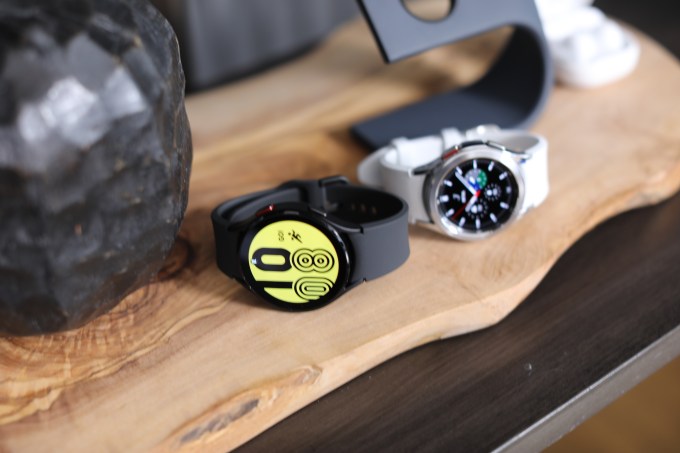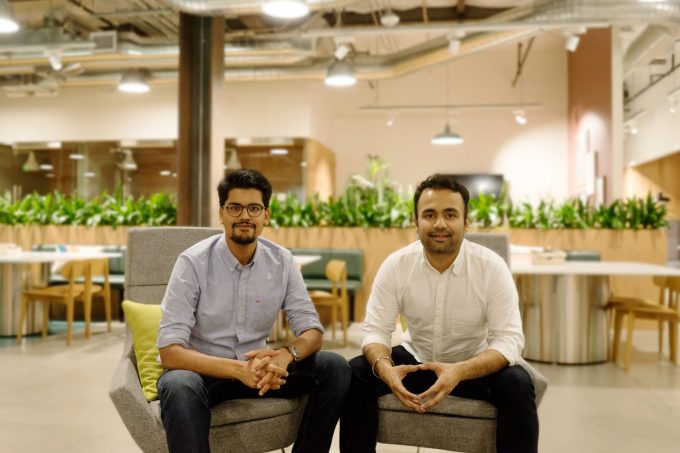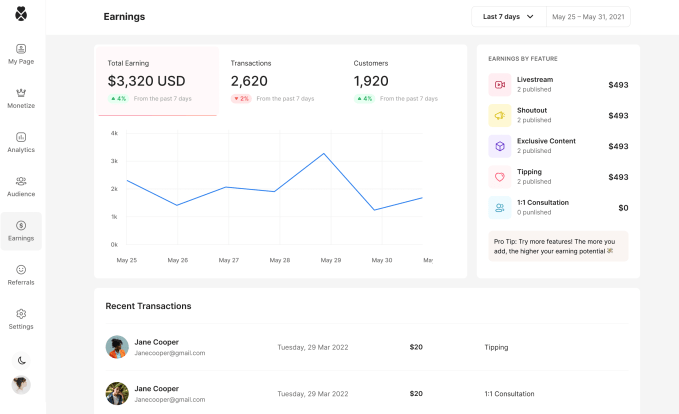- August 11, 2021
- by:
- in: Blog
Austin has made headlines over the past year for a number of reasons: It’s home to Oracle’s new headquarters. Tesla is building a massive gigafactory in the Texas capital. And people, mostly tech workers, are leaving the Bay Area in droves to settle in the city, driving up home prices in the process. It’s not
Austin has made headlines over the past year for a number of reasons: It’s home to Oracle’s new headquarters. Tesla is building a massive gigafactory in the Texas capital. And people, mostly tech workers, are leaving the Bay Area in droves to settle in the city, driving up home prices in the process.
It’s not just tech workers. A number of venture capitalists have set up shop in Austin, including Jim Breyer of Breyer Capital and Palantir co-founder Joe Lonsdale, who said last year he was moving his venture capital firm, 8VC, from Silicon Valley to the city.
The latest VC to call Austin home is Geoff Lewis, founder & managing partner of Bedrock Capital, a four-year-old early-stage venture capital firm with $1 billion in assets under management. Lewis started his investing career at Founders Fund, where he was a partner for several years. He either serves or has served on the board of companies such as Lyft, Nubank, Vercel and Workrise.
Lewis also led early investments in Wish, Upstart, Tilray, Canva, Rippling, ClearCo, Flock Safety and a number of other unicorns. He’s largely credited with popularizing the phrase “narrative violation” to describe promising companies that are overlooked or underestimated because they are incongruent with popular narratives.
In making the move to Austin, the investor said he had grown disillusioned with Silicon Valley and the region’s continued lack of focus on solving what he described as real-world problems. In a recent Medium post, Lewis said he was first introduced to Austin after backing Workrise (formerly called RigUp), a marketplace for skilled trade workers. In fact, he was the company’s first seed investor eight years ago, and has gone on to invest in the company eight subsequent times. Today, Workrise is valued at nearly $3 billion.
Lewis said he was drawn to the company, not just because it was “going to be huge” but also because it was “much more concerned with real people and real places than today’s Silicon Valley behemoths.”
“Put simply, it is a more humane technology company,” Lewis writes. “And it’s my search for this more humane genre of technological innovation that brought me to Texas. I’ve lived on the coasts and built my career as a Silicon Valley technology entrepreneur and investor, but I’ve never felt of the coasts or as an insider in Silicon Valley — I didn’t go to Stanford nor grow up rich.”
TechCrunch talked with Lewis to get more details around his decision to move his firm to Austin, learn more of his views on why Silicon Valley is too much of “a bubble” (spoiler alert: they may not be popular with many of you!) and how he plans to invest in more of Texas’ nexus of startups.
This interview has been edited for brevity and clarity.
TC: I understand that you grew up in Canada. How did you first get involved in the tech industry to begin with?
Lewis: I started off as an entrepreneur myself, building a SaaS company in the travel space [Topguest]. I founded that business in New York City and in 2009, ended up moving my team to San Francisco. I spent most of my career from 2009 to 2021 mostly bouncing between New York and SF. We ended up selling that company in 2011 and it was a reasonably okay outcome. I joined Founders Fund in 2012, where I just fell in love with investing. I ended up really having a special trajectory there and 2012 was a great time to be a young VC in San Francisco and Silicon Valley. I ended up specializing in marketplaces, both consumer and enterprise, backing companies like Lyft and Canva early. I also did the firm’s first fintech investment in Latin America, backing Nubank, and now that company has a $30 billion valuation.
I grew up with pretty modest means and by 2017, I figured I had done well enough as a VC and I should strike out on trying to get back to what I wanted to do, which was more entrepreneurial. So we founded Bedrock in late 2017. We’re on Fund III now and really it’s been consistent with the investment philosophy I pursued — trying to find what we call narrative violations, or these counter narrative companies that are being overlooked or underestimated. We were very early investors in Cameo, which is now obviously a pretty well-known business, for example.
TC: You initially chose to base Bedrock in New York. Why?
Lewis: When I was at Founders Fund I had a home in both cities (SF and NYC) so I was the kid who grew up in Calgary, Canada, and wanted to live on the coasts and be in the center of the action. But we decided to actually headquarter Bedrock in New York in 2017 because we had an inclination that Silicon Valley was becoming a little bit overly self-referential and wanted to be a bit outside of the noise. New York is less of a one-horse town, so we decided to base the firm there, but really invested in, and continue to invest, everywhere across the country, and quite honestly around the world. We invested in WorkRise in the early days, and more recently in Argyle and Lambda School.
TC: Tell me about this migration to Austin. At what point did you decide this is where you want to be and what drew you here?
Lewis: My first visit was in 2012 when I invested in Workrise, so I came to Austin quarterly for board meetings for years. And then a family member of mine actually got a position at UT (University of Texas). So that made me more excited about spending more time here. And then the real impetus I’d say happened, as I think it did for many people, during the pandemic. I remember in February, my partner Eric [Stromberg] and I had this conversation where we were like, “OK, COVID is going to have a deeper impact on New York City.” We saw it coming and decided we should get out of New York. At first, I moved to Hawaii and it was just a bit too isolated to live year-round, so I was like, “What’s a place that combines access to nature that’s not being in a big city but still has a nexus of smart, interesting people. I also was looking for a place where it would be easy to hop on a plane and get to either coast. Austin was the obvious choice. So many of my friends from the Bay Area were moving there, one after another, and loving it. So by January 2021, we had made the decision to move our firm here.
I don’t believe everyone should move to Austin. I don’t think it’s right for everyone, but I do think it’s right for us.
TC: Having myself lived in both the Bay Area and Austin, I actually see a number of growing similarities between the two. What do you say to that? Do you also feel like the culture is spilling over here?
Lewis: I have friends who are locals and have been here in some cases for like a generation-plus, and in other cases, have lived here since they were kids. They are really alarmed by how the city is changing, certainly like the real estate crisis, especially if you’re anywhere close to the core, is just absolutely insane. They’re definitely not used to the California and New York transplants. I definitely think it’s a problem that the city somehow does not quite have the infrastructure from a housing standpoint and from a transportation standpoint to support the growth on that; it’s a very big problem. I don’t think it’s a healthy long-term dynamic where you’ve got locals that really don’t like the newcomers coming in. So I think that is a big problem and I don’t quite know what the solution is.
But I think the wealth inequality is far less of a problem here than it is in the Bay Area. To me, that’s the number one thing that’s much better about Austin. Yes, there’s a homeless problem and yes there are people struggling here, but we’re not anywhere near the wealth inequality situation that exists in the Bay Area, which is like the most unequal — from a wealth standpoint — place in the country.
People can still get by here. And then I think the fact that it’s a blue city in a red state is actually really important. I’m pretty much an apolitical person and not that engaged in American politics but I do think there’s a dynamic where you’ve got a diversity of views and a diversity of opinions. There’s a natural tension that doesn’t exist in San Francisco and I think that leads to a more healthy set of policies over time.
TC: I know you’re planning to invest in more startups in Austin and Texas but not exclusively, right?
Lewis: Yes, we will invest anywhere and everywhere but already we have four investments in companies we met here in Austin, three of which we have made just since April. One is a Dallas-based company, Leadr, that has built a leadership development platform for enterprises. Another is a stealth company based here in Austin and we’ve also put money in a cryptocurrency analytics company that is not technically based here but has an office in Austin.
I definitely expect we’ll be making more investments in Texas than we used to now that we’re on the ground here.
TC: In your blog post, you made the statement that “innovators in Texas seem to care about real people in real problems more than the obstructions from reality to animate too much of Silicon Valley.” And I thought that was interesting and probably could stir up some controversy and backlash. Can you elaborate on that?
Lewis: I think there’s sort of this cultural dynamic where you have people that truly do live in these bubbles and so when you’re in the technology industry in San Francisco or quite honestly the entertainment industry in Los Angeles, I think folks just live entirely in this sort of self-referential bubble. And you only communicate and only ever interact with people that are in the same industry as you, and I think that leads to just a very, quite honestly parochial sort of inward looking worldview. There is something about a place that is less dominated by technology. When you think about Texas as a state — yes, tech is a major employer in Austin, but tech does not dominate the state of Texas by any means. It’s a huge state, there are lots of people here. There is a much smaller tech community. So definitionally, I think people tend to be friends with people from different walks of life. And I think people are just much more keyed into practical problems and issues.
There’s a Houston company that I’m not an investor in but that I’m really excited about the business, Solugen. It’s innovating chemical manufacturing in more environmentally sustainable and cost-effective ways, which to me is very much more of a real-world, practical problem type company.
You’ve got Leadr, which is trying to do leadership development for churches and faith organizations, using software. It feels like a company that just would never get started out of San Francisco where nobody is religious, and no one goes to church. So I do just think it’s a much different vibe here where you’ve got people that are less siphoned off from the real world versus living in this bubble, which is quite unhealthy. I don’t want to spend my time on another widget. I want to invest in things that are gonna actually have an impact on the world.
TC: This will likely be an unpopular opinion with many, and your comments might provoke some defensiveness. What would you say to any counterarguments?
Lewis: It’s not zero sum. The vibe here is I think a healthier one for me but I realize it’s not for everyone. Obviously there are many companies that have dramatically improved the world that have come out of the Bay Area. There are also companies that arguably have been net negative for society. These things are always open to debate. Whether something’s good for the world or bad is fundamentally subjective. I think at the very least Texas is a place where there’s a little bit more freedom to debate those opinions.










